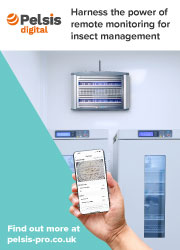Mitigating risk and ensuring compliance are intricate challenges for businesses, especially amid evolving legislation. John Greenough, Business Development Manager at Veriforce CHAS, outlines five key risk areas for Facilities Managers in 2024.
Adapting to new fire safety rules
Fire safety legislation has undergone significant changes following the Grenfell Tower Inquiry. The Fire Safety (England) Regulations 2022 now require responsible persons (RPs) of high-rise residential buildings of 18 metres in height, or at least seven storeys, containing two or more domestic dwellings, to provide information to Fire and Rescue Services.
While an RP might typically be the building owner, facilities managers may also be identified as the RP. Under the new regulations, the RP must understand all the fire risks of the building and undertake fire risk assessments (FRAs), assuming responsibility for various actions and reporting to fire services. When the facilities manager isn't the Responsible Person (RP), coordination with RPs is vital for thorough fire safety coverage. Clear task definitions and responsibilities are crucial. The risk assessment scope should be in writing, and facilities managers must accurately define the functions they commit to on behalf of the RP, understanding both their responsibilities and any defined limits.
Increasing health and safety fines
The Health and Safety Executive (HSE) continues to deliver record fines for breaches. Under new sentencing guidelines, businesses exceeding a turnover of £50 million can now face fines of up to £10 million for health and safety breaches and £20 million for corporate manslaughter offences. Failures in safeguarding, inadequate supervision, poor planning, and outdated policies are some of the root causes. Regular risk assessments, policy reviews, and clearly defined roles and responsibilities are vital components of a successful health and safety program in facilities management.
It's also crucial not to overlook contractor health and safety and ensure you have a prequalification process that assesses contractors based on their safety record, experience, and adherence to safety regulations.
Financial security and insurance concerns
For facilities managers dealing with third parties, there can be any number of financial liabilities, including late payments, cash flow issues, and price increases. It's also important to know whether your contractors have public liability insurance and their coverage level. Looking for external support from a credit check agency or a risk management provider can extract the financial health information needed to make decisions on engaging with potential partners as well as continuing with existing ones. Businesses can also practice what they preach by ensuring their own financial paperwork is in order, up to date and transparent.
Evolving information security risks
The growing integration of technology in facilities infrastructure poses information security risks for facilities managers. Prioritising cybersecurity measures, conducting regular risk assessments, and implementing robust information security policies are essential, as is assessing the practices of third-party suppliers and contractors, including information security requirements in contracts. Implementing measures to control access to sensitive areas is also imperative.
Contractor management and accreditation
Facilities managers typically rely on contractors to fulfil a variety of functions. However, contractor management can be notoriously complex and time-consuming. Yet, something like a serious health and safety breach or a data infringement by a rogue contractor can have a detrimental impact not only on a business's finances but also on their legal standing and reputation.
Accreditation is, therefore, crucial in minimising contractor risk as it signifies that contractors meet certain industry standards, have the necessary qualifications, and adhere to ethical practices. When a contractor must undergo a rigorous assessment to gain accreditation, it offers greater assurance of their quality, safety and reliability.
CHAS Client membership offers access to a database of accredited contractors, allowing clients to search based on trade, qualification level, and location. The free CHAS client portal provides visibility into projects, subcontractors, and compliance in areas like health and safety, GDPR, environmental performance, and financial risk.
Conclusion
Managing risks in facilities demands a proactive approach, with consistent reviews and updates of risk management strategies. Ensuring compliance with regulations and staying informed about industry best practices safeguard organisational resilience and enable effective responses to emerging threats.
Call: 0345 521 9111



































